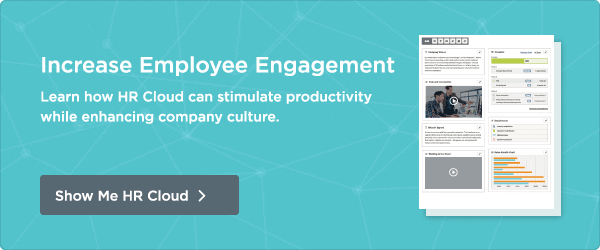A Surefire Way to Engage a Multi-Generational HR Team



 Cut onboarding time
by 60%—here's the
Ultimate Checklist
that helped do it.
Cut onboarding time
by 60%—here's the
Ultimate Checklist
that helped do it.

Corporate mentoring is on the rise and in fact, 71% of Fortune 500 companies offer mentoring programs to their employees. Successful companies are leveraging mentoring to tackle complex human resource challenges such as employee retention and increasing workforce productivity. However, traditional mentoring leaves valuable knowledge on the table. Due to today’s rapid pace of change in the workplace and the widening knowledge gap between generations, there is a need to go one step beyond traditional mentoring. The key solution to engaging and transferring knowledge across a multi-generational HR team is reverse mentoring.
What is reverse mentoring?
Reverse mentoring is a learning relationship where senior executives or veteran employees are paired with younger employees who then share their insights on technology, social media, and the latest workplace trends.
Unlike traditional mentoring, in which the mentor is always a senior individual who can pass on experience without much risk of pushback from the mentee, reverse mentoring provides an environment where information and insights can freely flow and where the organizational hierarchy is flattened.
Reverse mentoring creates diverse environments where individuals can communicate openly, provide insights, share ideas, and challenge legacy thinking.
Who is using reverse mentoring?
Jack Welch, while CEO at GE, was credited for being one of the first adopters of reverse mentoring. Welch selected a junior employee to mentor him and then mandated that 500 of his executives find a reverse mentor. Since then other large companies including HP, The Hartford, Deloitte, Coca-Cola and the San Francisco 49ers have initiated reverse mentoring programs.
The technology company, Cisco Systems, retains Millennials and engages their multi-generational teams by leveraging reverse mentoring. According to Carlos Dominguez, a senior vice president at Cisco, they have created a simple app to match mentor and mentee. Carlos believes that if reverse mentoring is done right, both participants gain tremendous value.
Benefits of Reverse Mentoring
• Knowledge Transfer. Entering into cross generational relationships allows for specific knowledge and experience to be passed on to the younger generation.
• Increased Millennial Retention. Reverse mentoring provides the opportunity to contribute and have an impact that Millennials desire.
• Compound Growth. Both parties get equally equipped. Millennials want insights that Google can’t give them. Non-Millennials will benefit by understanding what’s next.
• Fresh Perspectives. Young mentors can offer insights into their target market, help define a brand voice via social media, or provide advice on digital best practices.
How to begin reverse mentoring?
1. Make a list of 5 things you don’t know but need to know.
2. Identify 1 or 2 items from the list that you are most likely not to learn on your own or during your course of work.
3. Identify a junior colleague that has the expertise you need.
4. Ask the junior colleague to mentor you.
5. Clarify where to meet, frequency, expectations, etc.
6. Prepare by identifying a set of questions before the first meeting. (Don’t be afraid to ask naive questions.)
7. Meet and mentor.
If you’d like to really stretch yourself, avoid reciprocal mentorship. Do 100% of the learning. Think beyond having someone mentor you on social media. Consider having them teach you something you think you already know, such as leadership.
When you decide to engage in reverse mentoring, you may also receive invaluable HR insights that reflect your employee population. You will also be setting an example of continuous learning and hopefully demonstrating the strong communication skills that so many Millennials desperately need.
Disrupt and expand your perspective with reverse mentoring.

Keep Reading
How HR Cloud Is Shaping the Future of HR in Senior Care
At the 2025 LeadingAge Annual Meeting in Boston, one conversation is taking centerstage —
Top 10 Best Employee Engagement Software
An employee engagement platform acts as a hub for the daily or other periodic rituals of
How to Improve Employee Engagement in Healthcare: 9 Simple Things to Start Doing Today
Improving employee engagement in healthcare teams directly impacts the level of care
Like What You Hear?
We'd love to chat with you more about how HR Cloud® can support your business's HR needs. Book Your Free Demo

Build a Culture of Recognition. Boost Engagement. Guaranteed.
Workmates empowers employees to stay informed, connected, and appreciated—whether they’re on the front line, in the office, or remote. Recognition drives 12x higher engagement.Trusted by industry leaders in every sector




Cut Onboarding Costs by 60%.
Take the confusion and follow-ups out of onboarding with automated workflows, digital forms, and structured portals—so new hires ramp faster 3X quicker.Trusted by industry leaders in every sector





